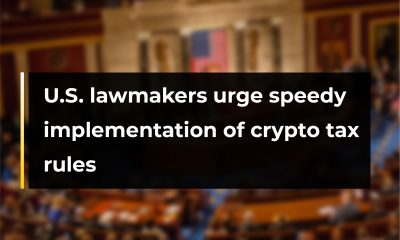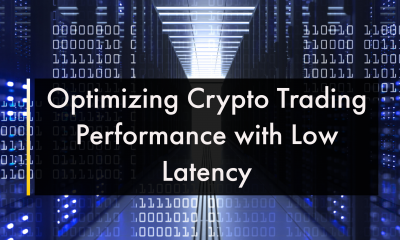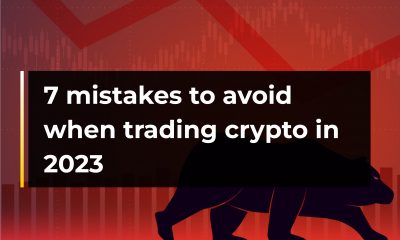News
Mastering the Art of Crypto News Trading

In the crypto industry, there’s one aspect that never loses its intrigue: news trading. It’s a topic that has been explored repeatedly, and yet, its allure remains undiminished.
News trading is not a recent phenomenon; it’s been a part of the financial world for as long as anyone can remember. It finds its roots in the Efficient Market Hypothesis, which posits that asset prices reflect all available information. This implies that it is impossible to “beat the market” consistently on a risk-adjusted basis since market prices should only react to new information.
The EMH was first proposed by economist Eugene Fama in the 1960s. He divided the EMH into three forms:
- Weak-form efficiency: This form of the EMH states that all past prices are already reflected in current prices. This means that technical analysis, which studies past prices in an attempt to predict future prices, is not useful.
- Semi-strong-form efficiency: This form of the EMH states that all publicly available information is already reflected in current prices. This means that fundamental analysis, which studies financial statements and other public information in an attempt to predict future prices, is not useful.
- Strong-form efficiency: This form of the EMH states that all information, including private information, is already reflected in current prices. This means that it is impossible to beat the market, even if you have access to inside information.
The EMH has been challenged by some studies, which have found that some investors can consistently beat the market. However, despite the challenges, the EMH remains a dominant theory in financial economics.
There are several reasons why the EMH might be true. First, the market is very efficient at processing information. New information is quickly disseminated throughout the market, and prices adjust accordingly. Second, many investors are constantly trying to find mispriced assets. These investors are called arbitrageurs, and they help to ensure that prices are always fair.
However, in practice, crypto asset prices often lag behind the rapid flow of information, creating opportunities for traders who can act swiftly.
So, when news breaks, every second counts. Traders must quickly interpret the news, anticipate how it will be perceived by others, and gauge how fast it will spread. These elements form the cornerstone of successful news trading.
The Perception vs. Reality of Market Speed
When crypto news trading, timing is everything. News moves fast, but markets, despite appearances, can be surprisingly slow to react. Take, for example, the case of Twitter-Dogecoin. The news of this partnership emerged, and for several crucial minutes, the price of Dogecoin remained stagnant. Then, within half an hour, a 30% surge ensued.
Read also: Polygon to add new features to its zkEVM mainnet beta upgrade
This example emphasizes a critical lesson: Even when markets appear slow, traders who act swiftly based on their judgment calls can seize opportunities before others. Yet, while the concept may sound simple, executing it is far from easy. It requires the ability to interpret news rapidly, understand how other traders will perceive it, and estimate how quickly the news will disseminate.
The Timing Ladder: Where do you stand?
Part of mastering news trading is recognizing that different types of news impact specific markets. Being aware of which market you’re in and understanding the nuances of that market is vital. For instance, news affecting the cryptocurrency market may not have the same impact on traditional stocks.
The other part is knowing where you stand before trading on a news event. To put it in perspective, the “timing ladder” categorizes traders into groups A to G based on when they enter a trade:
- A: Insiders and teams
- B: Coders with inside access and hackers
- C: Coders with a speed advantage
- D: Bots that react to group C tweets
- E: Manual traders who quickly analyze news
- F: Manual traders who enter late
- G: Laggards who join after the news is widely known
The news trading timing ladder is a trading strategy that uses news releases to time trades. Understanding your position on this ladder is important when news trading. The idea is to buy or sell an asset before or after a news release, depending on how you think the market will react to the news.
The news trading timing ladder has three levels:
- Pre-release: This is the period of time before the news release is made public. This is the time to place your orders, depending on whether you think the news will be positive or negative for the asset.
- During release: This is the period of time when the news release is being made public. This is the time to monitor the market and adjust your orders as needed.
- Post-release: This is the period of time after the news release has been made public. This is the time to close your positions and take profits or losses.
The market’s inefficiency means that some catalysts take time to fully price in, making timing paramount.
News trading’s complexity has given rise to innovative solutions like Newsly ($news), a Telegram bot designed to provide rapid news updates and facilitate one-click trades. Newsly offers a quick curated source of crypto news while also acting as a trading terminal.
This project is not only efficient but also user-friendly, allowing traders to act on news instantly. Users can connect their Binance or ByBit accounts to the bot, streamlining the trading process. However, the question arises: Is the convenience of Newsly worth it when trading directly on a centralized exchange may take only a few seconds longer?
That question is left for you to do your research and find out. But here’s what you also need to keep in mind when using the news trading timing ladder:
- The news release should be relevant to the asset you are trading.
- The news release should be unexpected. If the market is already expecting the news, it is less likely to react.
- The news release should be significant. A small news release is unlikely to have a big impact on the market.
- The market should be liquid. This means that there should be enough buyers and sellers to make it easy to trade the asset.
- Make use of reputable news sources. Trustworthy sources provide reliable information.
Wrapping it up
News trading is a challenging but potentially rewarding endeavour. In a world where news can shape markets in mere seconds, news trading is a game of patience and precision. It demands screen time, practice, and a deep understanding of market dynamics.
While it may not guarantee instant success, with dedication and the right strategies, you can hope to master the art of news trading successfully. Remember, in news trading, every second counts, and timing can make all the difference.
























